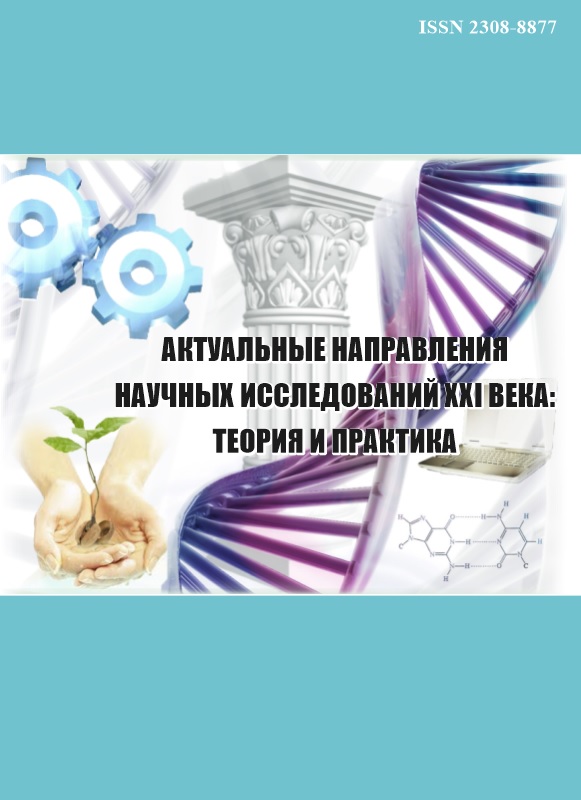Voronezh, Voronezh, Russian Federation
Voronezh, Voronezh, Russian Federation
The results of a study of red oak crops located on the territory of the Kurdzhip precinct forestry of the Republic of Adygea (western part of the North Caucasus) are presented. The characteristic of red oak, as a tree species, is less demanding on soil conditions compared to other forest-forming species and has high decorative properties, due to which it is used alone for planting in open areas, as a hedge along roads, individual tracts in parks, squares in the form of oak groves. It goes well both in pure stands and in combination with pine, beech, hornbeam, elm, ash, linden, mountain ash, maple. It is able to grow on sandy loam and loamy podzolic soils without stagnant moisture, mainly along river banks. It grows poorly on calcareous and moist soils. Due to its well-developed root system, wood is resistant to wind. Red oak is characterized by good resistance to damage by entomo - and phyto pests [1, 5]. The paper analyzes the taxation indicators of red oak and related species crops, and plots of growth progress along the height and diameter of the crops are constructed. The growth and productivity advantage of the oak over red oak has been established.
forest cultures, red oak, productivity, taxation indicators, forest type, growth rate
ВВЕДЕНИЕ
Дуб красный, естественно произрастает в Северной Америке. В культурах встречается в Ленинградской области, Московской области, Ростовской области и на Северном Кавказе. Древесная порода, достигающая высоты 20 – 40 м с достаточно прочной древесиной и высокими декоративными свойствами. В сравнении с дубом черешчатым менее требователен к плодородию почвы [4, 6].
ЦЕЛЬ ИССЛЕДОВАНИЯ
Провести анализ продуктивности искусственных насаждений Курджипского участкового лесничества республики Адыгея с преобладанием дуба красного и сопутствующих древесных пород.
МАТЕРИАЛ И МЕТОДЫ ИССЛЕДОВАНИЯ
Объектом наших исследований были искусственные насаждения дуба красного в возрасте 32 лет Майкопского лесничества, Курджипского участкового лесничества республики Адыгея, квартал 5, выдел 5, 32, 37, 38. Состояние культур удовлетворительное. Тип леса СВДЧ - свежие дубняки дуба черешчатого, тип условий произрастания Д2 - свежая дубрава. В подлеске встречаются: лещина, бузина, боярышник, боярышник кавказский. В основе исследований положен метод сравнения и анализа [2,3].
1. Kulakova, E. N. Lesnye kul'tury v vostochnoy chasti Severnogo Kavkaza [Tekst] / E. N. Kulakova // Plodovodstvo, semenovodstvo, introdukciya drevesnyh rasteniy / otv. red. R. N. Matveeva; SibGTU. - Krasnoyarsk, 2015. - T. 18, № 18. - S. 37-39.
2. Kulakova E.N. Forest plantations of the foothills of the North Caucasus and their environmental and economic assessment / E. N. Kulakova // IOP Conference Series: Earth and Environmental Science. - 2019. - Vol. 392. - 012013.- . URL: https://iopscience.iop.org/article/10.1088/1755-1315/392/1/012013/pdf. - DOI:https://doi.org/10.1088/1755-1315/392/1/012013.
3. Mal'cev, M. P. Lesnye kul'tury v predgornyh i gornyh rayonah Severnogo Kavkaza [Tekst] / M. P. Mal'cev // Sbornik trudov SKLOS. - 1954. - Vyp. 1. - 54 s.
4. Bargali, K. Diversity within Oaks [Text]/K. Bargali, B. Joshi, S.S. Bargali, S.P. Singh// Int. Oaks. - 2014. - 25. - Pp.57-70.
5. Nicolescu V.N. Ecology and management of northern red oak (Quercus rubra L. syn.Q. borealis F. Michx.) in Europe: a review / Valeriu-Norocel Nicolescu, Torsten Vor, William L. Mason, Jean-Charles Bastien // ForestryAn International Journal of Forest Research. - 2018. - 1-14, doihttps://doi.org/10.1093/forestry/cpy032/.
6. Chernyshov, M. P. Iskusstvennoe lesovosstanovlenie na sklonah Severnogo Kavkaza [Tekst] / M. P. Chernyshov, V. N. Gneev //Lesnoe hozyaystvo. - 1995. - № 5. - S. 30-32.










